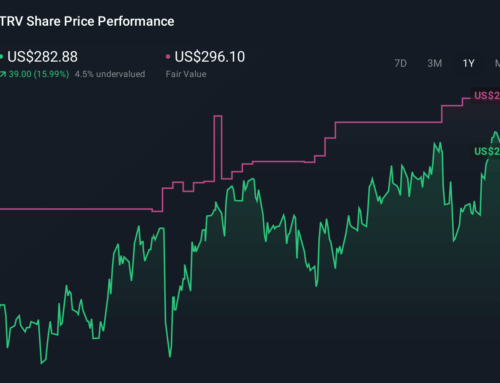Cannabis Health Risks in 420 Friendly Times: Facts for Patients
May 5, 2025
Our easy-to-read fact sheets provide clinicians with reliable information to share with patients and their caregivers.
What are the health risks of cannabis use? This question has become increasingly important in the United States, which has become more 420 friendly (ie, accepting of cannabis use) as more states legalize cannabis.
As cannabis consumption has become more common for both medical and recreational purposes,1,2 the cannabis marketplace has also evolved; new forms have become available that feature different ratios of cannabidiol (CBD) and delta-9 tetrahydrocannabinol (THC), as well as semi-synthetic hemp-derived THC-containing products, such as delta-8 THC and THC-O acetate.1 In 2022, cannabis was a nearly $40 billion industry in the US, with cannabis users comprising an estimated 62 million people, or 25% of the population aged 12 and older.1
In the face of growing acceptance and an exploding array of products, cannabis use has increased among adults during the past 20 years.1 Yet at the same time, more research has come out documenting health risks that may be associated with cannabis use. Ironically, despite a growing body of evidence detailing the health risks of cannabis, there has been a decrease in the perceived risk of the possible harms of cannabis use, both among adults and adolescents.1
This fact sheet will detail the risks of cannabis use based on how often people partake, the form of cannabis being consumed, other pharmaceuticals an individual may be taking, and certain conditions an individual may have that could affect cannabis use risks.
Cannabis risks vary by duration (short- vs long-term)2 and frequency of use and by the potency of the substance consumed. In general, cannabis risks are greater for people who begin cannabis use at a younger age and who use it more frequently.1
Short-term Use
These include changes in mental status, such as decreased inhibition and impaired memory, learning, attention, and movement.3
Long-term Use
Long-term effects include a decrease in motivation to participate in everyday activities due to changes in the reward circuits in the brain.4,5 There is also an increased risk for developing certain mental health disorders such as anxiety, psychosis, bipolar disorder, and schizophrenia.6-8 Long-term cannabis use is also associated with increased risk for cardiovascular events, such as heart attacks and strokes.9 Lung diseases such as chronic bronchitis and asthma are also potential risks.10-12
Higher Usage
The risks of high-frequency and high-potency cannabis use may include pancreatitis and severe bouts of abdominal pain with nausea and vomiting.13-14 Individuals who use cannabis more frequently are also more likely to develop cannabis use disorder (CUD), which affects about 1 in 5 cannabis users.15 Cannabis use disorder is characterized by a loss of control over cannabis use and withdrawal symptoms when it is stopped. In addition, individuals with CUD often experience financial difficulties, are less likely to have a job or complete education, and have impaired driving.15
The diverse forms of cannabis available from dispensaries are consumed differently and may have varying risks. The most common way that cannabis is consumed is through inhalation, followed by the ingestion of edibles and vaping.16 Cannabis variants offered at dispensaries include dabs, sublinguals, topicals, flowers, concentrates, suppositories, and tinctures.
Inhaled Forms
Smoking cannabis can cause short- and long-term respiratory effects.12 Potential short-term risks include bronchitis and shortness of breath, whereas potential long-term effects include an increased risk for chronic bronchitis and asthma.10-12 Vaping may result in fewer short-term respiratory effects than smoking, but long-term effects remain unclear.17 Adulterants, which are contaminants that may be present in the vaping concentrate, are also associated with risks, such as e-cigarette or vaping product use-associated lung injury.18
Edibles
Edible forms of cannabis include foods, drinks, oils, and tinctures.17 Ingesting edibles is not associated with respiratory effects, but can still cause an increased heart rate.12
Cannabis Concentrates
Cannabis concentrates, which can be inhaled or ingested, have their own potential risks because of their processing.17 For example, pesticides or residual solvents have been detected in some concentrates, and cases of psychosis, cardiac effects, and central nervous system effects have been reported.18
Adolescents and Young Adults
Potential long-term effects of cannabis use by adolescents and young adults include an increased risk for developing cannabis use disorder and depression.15,19 Cannabis use in adolescents is also associated with increased risk for suicidal ideation and suicide attempts.19
Individuals With Mental Health Disorders
Individuals with psychotic disorders, such as bipolar disorder and schizophrenia, may experience worsened symptoms and an increased risk for rehospitalization with cannabis use.20
Pregnant or Lactating Individuals and Infants
Delta-9 THC crosses the placenta and can affect the fetus of a pregnant person. Some studies suggest that cannabis exposure can result in small birth size.21 However, the demographics of pregnant cannabis users and nonusers are very different, which can affect study outcomes.22 More studies are needed to determine cannabis use risks during pregnancy.
Delta-9 THC is also present in the breast milk of cannabis users, but there are few studies on its potential effects on the infant.23 One study of daily cannabis use suggested that this may impair infant motor development, but found no effects on intellectual development or growth. Another study of occasional use reported no short-term effects on the infant, but acknowledged the need for additional studies of long-term effects.
Cannabis may also reduce milk supply due to a decrease in the hormone prolactin.23
Cannabis may interact with some drugs, including warfarin, some antiepileptic drugs (eg, stiripentol, valproate), clobazam, buprenorphine, methadone, chlorpromazine, clozapine, brivaracetam, tacrolimus, everolimus, imipramine, and ketoconazole.24
1. Will cannabis use impair my ability to drive?
Yes, cannabis use impairs driving abilities.25 Cannabis use can slow down your ability to stay within your lane and applying the brake. Depending on the amount of THC that was used, these effects can last up to around 5 hours.
2. Should I tell my doctor that I use cannabis?
Yes, it is important to tell your doctor if you use cannabis, especially if you are potentially experiencing negative effects from its use or if you are taking drugs that cannabis may interfere with.
3. What should I do if I think I have cannabis use disorder?
It is important to talk to your doctor if you think you may have cannabis use disorder. Your doctor can help you find a treatment, either through a therapist or a treatment facility that specializes in helping individuals with substance use disorders.
Download this fact sheet as a PDF
This article originally appeared on Pulmonology Advisor
References:
Search
RECENT PRESS RELEASES
Related Post



